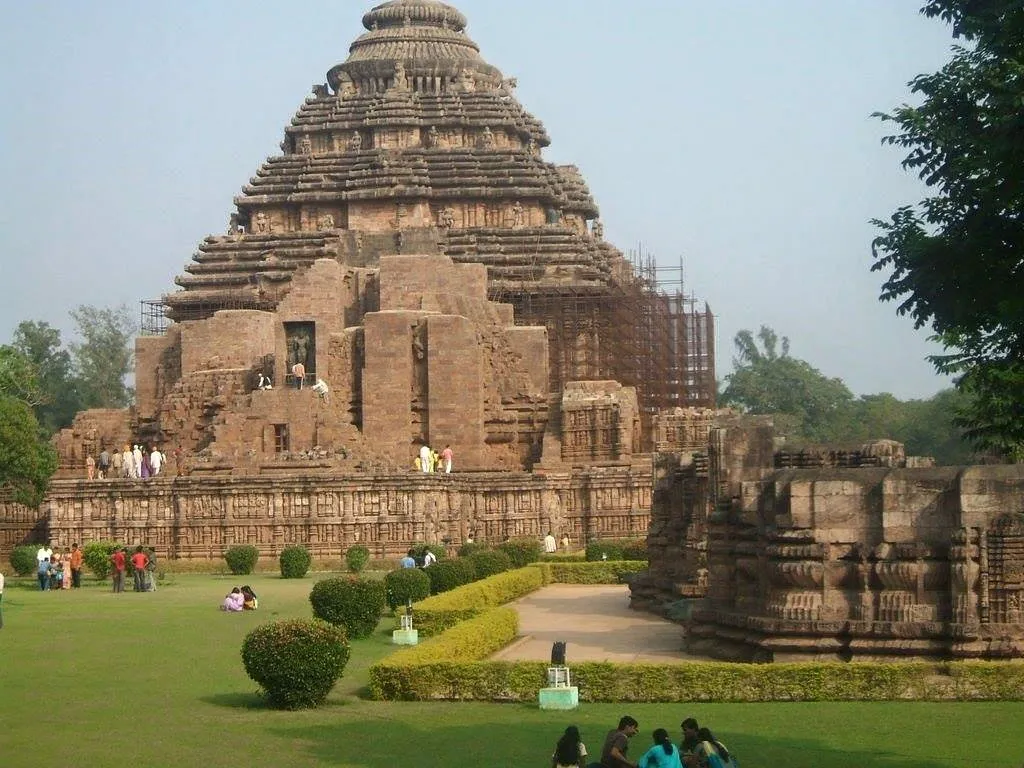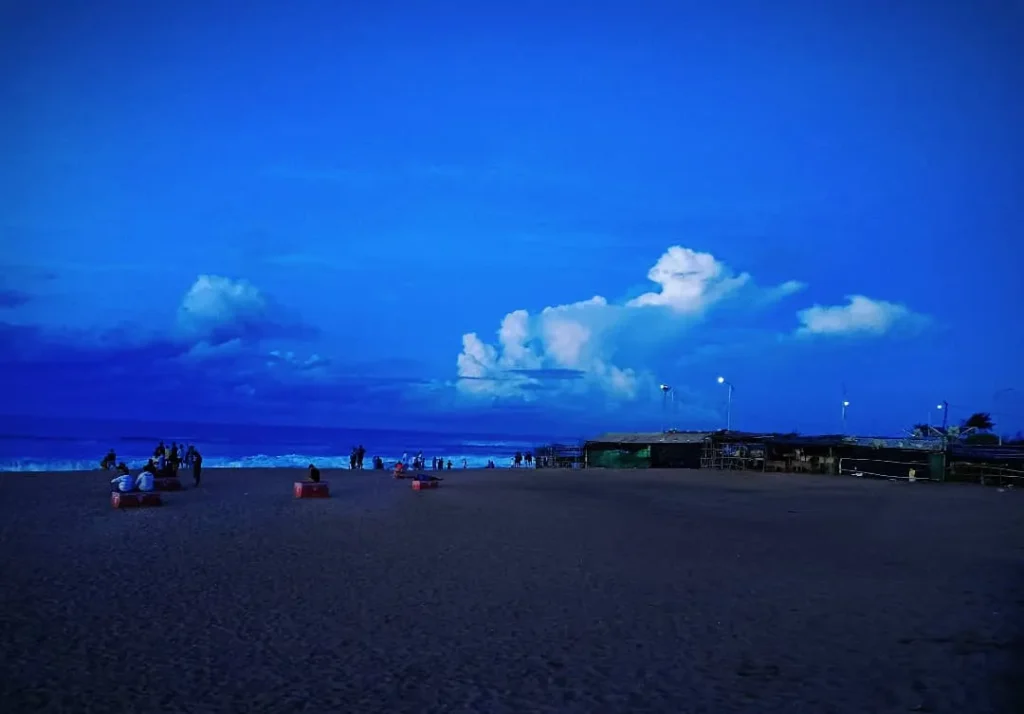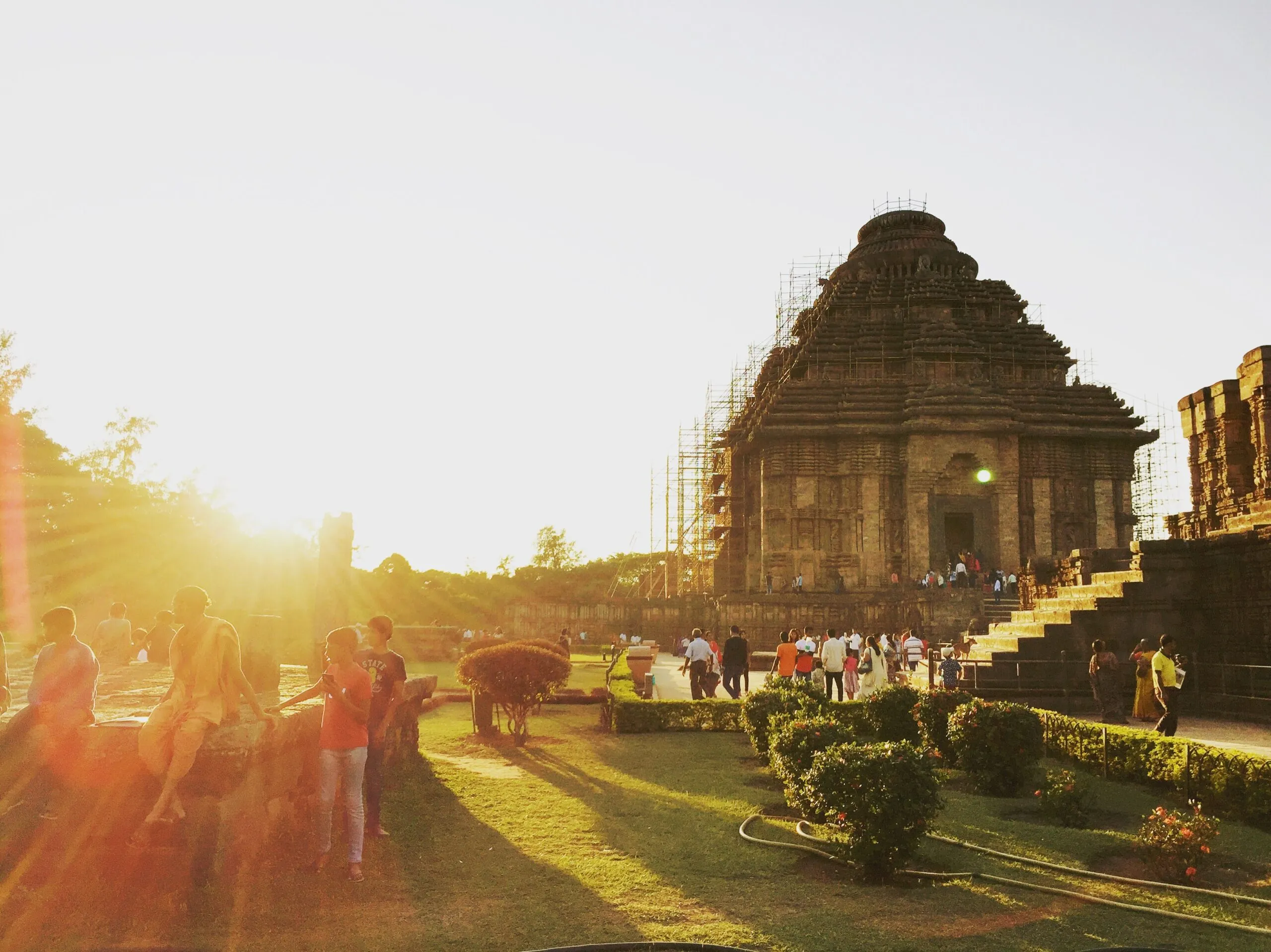Sun Temple Konark: A Journey into Ancient Indian Architecture
The Sun Temple Konark, located in the coastal town of Konark in Odisha, India, stands as a testament to the architectural brilliance and artistic finesse of ancient India. This UNESCO World Heritage Site is a marvel that has captured the imaginations of millions. Let’s explore the history, architecture, and cultural significance of the Konark Sun Temple. We will also delve into the various aspects that make it a prominent attraction for tourists and history enthusiasts.
| Location | Puri District(Odisha) |
| Timing | 6 AM to 8 PM |
| Entry Fee | Indian [email protected],Foreign [email protected], For BIMSTEC & SAARC [email protected] |
| Nearest Airport | Biju Patnaik International Airport, Bhubaneswar |
| Nearest Railway Station | Bhubaneswar |
| Nearest Bus stop | Konark Bus Stop |

Konark Meaning
The Sun Temple is a magnificent temple dedicated to the Sun God, Surya. The word ‘Konark’ is a combination of two words ‘Kona’ and ‘Arka’. ‘Kona’ means ‘Corner’ and ‘Arka’ means ‘Sun’. It is a UNESCO World Heritage Site Since 1984.
Historical Background
The Konark Sun Temple, also known as the “Black Pagoda,” was constructed during the 13th century. It was commissioned by King Narasimhadeva I of the Eastern Ganga Dynasty. This magnificent structure is dedicated to the Hindu Sun God, Surya. The temple’s construction is believed to have begun in 1255 CE and took around 12 years to complete. It was designed to represent the Sun God’s chariot, with 24 intricately carved wheels and seven magnificent horses.
The temple was a hub of cultural and religious activities during its prime. Pilgrims and scholars flocked to Konark to pay their respects and participate in the festivities. Unfortunately, the temple eventually fell into disrepair and was abandoned.
Architecture and Design of Sun Temple Konark
Chariot-Shaped Structure:
The most striking feature of the Konark Sun Temple is its chariot-like structure, designed as the Sun God’s divine vehicle. The temple has 24 elaborately carved stone wheels that represent the hours of the day and night. These wheels are exquisitely detailed and serve as an architectural masterpiece.
Exquisite Stone Carvings:
The temple’s stone carvings are unparalleled in their beauty and intricacy. The walls of the temple are adorned with depictions of celestial beings, mythological stories, and intricate patterns. The sculptors displayed their remarkable skills in creating intricate designs that showcase various aspects of daily life, religious symbolism, and the cultural ethos of the time.
Main Sanctuary:
The temple’s main sanctuary, called the “Jagamohana,” is still partially preserved. It features a pyramidal tower and a majestic hall supported by intricately carved pillars. The sanctum sanctorum, which once housed the Sun God’s idol, is now empty.
Sun Dial:
One of the most remarkable features is the sundial, which accurately told the time during the temple’s heyday. The intricately designed sundial is a testament to the advanced knowledge of astronomy and mathematics possessed by the builders of the temple.
Who Built Konark Sun Temple ?
It was built in the 13th century and is renowned for its architectural grandeur and intricate sculptures. The construction of the Sun Temple is credited to King Narasimhadeva I of the Eastern Ganga Dynasty. King Narasimhadeva I ruled from 1238 to 1264 CE, and it is believed that the temple was built during his reign.
Puri to Konark Distance
The distance between Puri and Konark in the Indian state of Odisha is approximately 35 kilometers (about 22 miles) by road. The most common route to travel between these two popular tourist destinations is by taking the Marine Drive, which is a scenic road along the coast of the Bay of Bengal. It usually takes around 1 to 1.5 hours to travel from Puri to Konark by car, depending on traffic and road conditions.
Bhubaneswar to Konark Distance
The distance between Bhubaneswar, the capital of the Indian state of Odisha, and Konark is approximately 65 kilometers (about 40 miles) by road. The most common route to travel from Bhubaneswar to Konark is via the NH-316, which is a well-maintained road that connects the two places. The journey typically takes around 1.5 to 2 hours by car, depending on traffic and road conditions.
Nearby Attraction



Chandrabhaga Beach
Chandrabhaga Beach is a picturesque and serene beach located near the town of Konark in the Puri district of Odisha, India. It is known for its natural beauty, golden sands, and the annual Chandrabhaga Mela that takes place here.
Ramchandi Temple
The Ramchandi Temple is located on the confluence of the River Kushabhadra and the Bay of Bengal near Konark in the Puri district of Odisha, India. This temple is dedicated to the Hindu goddess Ramchandi, considered a form of Devi or Shakti, and is a revered pilgrimage site in the region.
Archaeological Museum, Konark
The Archaeological Survey of India (ASI) museum in Konark is known as the Konark Archaeological Museum. This museum is located in the proximity of the Konark Sun Temple and houses a collection of sculptures and artifacts that have been excavated from the site and its surrounding areas. Please note that specific details, such as museum names, locations, or exhibits, may change, so it’s advisable to check for the most recent information from local sources.
Kuruma Buddhist Site
Let’s Visit to Puri Jagannath
Cultural Significance
Religious Importance:
The Konark Sun Temple holds immense religious significance for Hindus. It is dedicated to Surya, the Sun God, and was an important pilgrimage site in its prime. Devotees flocked to the temple to offer their prayers and seek blessings from the Sun God.
UNESCO World Heritage Site:
The Konark Sun Temple was designated as a UNESCO World Heritage Site in 1984, recognizing its exceptional architectural and artistic value. It has since attracted tourists and scholars from around the world, contributing to its preservation and global recognition.
A Hub of Learning:
During its heyday, the temple was not just a religious center but also a hub of learning and culture. Scholars and artists congregated here, exchanging knowledge and ideas. This thriving cultural exchange contributed to the development of various art forms and philosophical thought.
Decline and Preservation
Over the centuries, the Konark Sun Temple faced numerous challenges, leading to its gradual decline. It is believed that the temple was abandoned due to the shifting course of the Bhargavi River, which threatened its structural integrity. Additionally, repeated invasions and natural calamities took a toll on the temple.
In the early 19th century, efforts were made to preserve and protect the temple’s remaining structures. The British administration, along with later Indian authorities, undertook restoration and conservation work. Today, the Konark Sun Temple stands as a partially restored marvel, showcasing the grandeur of its past.
Visiting the Konark Sun Temple
Visiting the Konark Sun Temple is a journey back in time, offering a glimpse of India’s rich heritage. It is easily accessible from the nearby cities of Bhubaneswar and Puri, making it a popular destination for tourists and history enthusiasts.
The temple is open to visitors throughout the year, and it is advisable to visit early in the morning or late in the afternoon to avoid the scorching midday sun. Guides are available on-site to provide insights into the temple’s history and architecture.
The Konark Sun Temple, with its extraordinary architecture and cultural significance, continues to be a symbol of India’s rich heritage. Its intricate carvings, unique design, and religious importance make it a must-visit destination for those interested in history and art. The temple’s UNESCO World Heritage status underscores its global significance. As a testament to the artistic and architectural achievements of ancient India, the Konark Sun Temple invites visitors to appreciate its timeless beauty and immerse themselves in the history and culture it represents.

